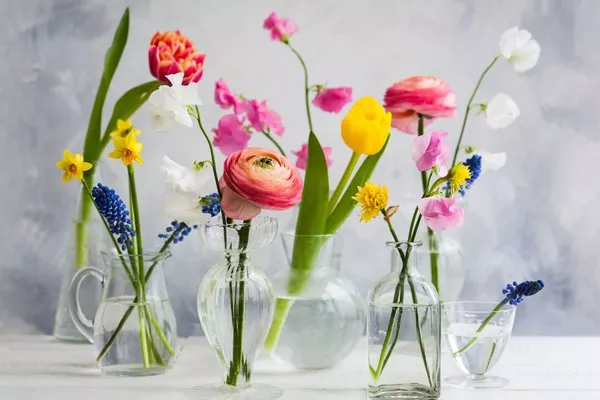Flower arrangements have been cherished for centuries as symbols of beauty, love, and celebration. With their alluring fragrances and captivating colors, flowers have the power to uplift spirits and enhance any occasion. Among the myriad of flower arrangement styles, some have stood the test of time and gained enduring popularity. In this article, we will explore the most popular flower arrangement and the art of floral design, the significance of flowers in different cultures, and the key factors driving the preferences of modern consumers.
1. The Art of Floral Design
Floral design is a true art form that involves skillful craftsmanship, creativity, and a deep understanding of aesthetics. Professional florists and floral designers bring forth their talents to create harmonious arrangements that appeal to the senses and emotions. There are various principles of floral design, including balance, proportion, rhythm, and harmony, which guide the creation of stunning compositions.
2. The Classic Beauty of the Bouquet
The bouquet is perhaps the most iconic and widely recognized flower arrangement. It is a gathering of fresh blooms, usually bound together with ribbon or twine, creating a harmonious display of colors, shapes, and textures. Bouquets are commonly used in weddings, as bridal bouquets, and as gifts for special occasions. The round bouquet, cascading bouquet, and hand-tied bouquet are some popular variations that continue to captivate hearts worldwide.
3. The Timeless Elegance of the Rose Arrangement
Roses have an unmatched charm and have been beloved for generations. The rose arrangement, often featuring a single type of rose or a mix of colors, exudes timeless elegance and sophistication. It is a popular choice for expressing love, admiration, and gratitude. From a simple bud vase to a grand centerpiece, rose arrangements find their way into a multitude of settings, from romantic dinners to lavish events.
4. The Vibrant Allure of Ikebana
Originating in Japan, Ikebana is a disciplined art of flower arrangement that emphasizes minimalism and symbolism. It is characterized by the use of precise lines and open spaces, representing the harmony between humanity, nature, and the divine. Ikebana arrangements typically feature a few carefully chosen flowers, leaves, and branches, often arranged asymmetrically in a simple container. The fusion of artistic expression and Zen philosophy makes Ikebana a deeply revered and admired style of floral design.
5. Cultural Significance of Flowers
Flowers have distinct meanings and cultural significance in various societies around the world. For instance, the cherry blossom holds immense importance in Japan, symbolizing the fleeting nature of life and beauty. In India, marigolds are used extensively in religious ceremonies and celebrations due to their association with purity and auspiciousness. Understanding the cultural symbolism of flowers is crucial when creating arrangements for multicultural events or sending floral gifts to people from different backgrounds.
6. Seasonal Flower Arrangements
Seasonal flower arrangements are deeply connected to the cycles of nature and the availability of flowers throughout the year. Spring brings a profusion of tulips, daffodils, and cherry blossoms, while summer boasts the radiance of sunflowers and dahlias. In autumn, arrangements often feature warm-colored chrysanthemums and asters, while winter is celebrated with evergreens, holly, and poinsettias. Embracing seasonal flowers allows for fresh and locally sourced creations, enhancing the beauty and authenticity of floral displays.
7. Sustainable and Eco-Friendly Floral Practices
As environmental consciousness grows, the floral industry has seen a rise in sustainable and eco-friendly practices. Consumers are increasingly drawn to flower arrangements that are ethically sourced, reduce waste, and have a minimal carbon footprint. Sustainable floristry encourages the use of local and seasonal flowers, reusable containers, and biodegradable floral foam alternatives. By choosing eco-friendly floral options, individuals can enjoy the beauty of flowers while preserving the planet for future generations.
8. Customization and Personalization
Personalization is a significant trend in the modern flower arrangement landscape. Customers seek unique designs that reflect their individual preferences and sentiments. Customization can range from selecting specific flower types and colors to incorporating personal elements, such as favorite colors or birth flowers. With the convenience of online flower delivery services, consumers can easily customize arrangements and add a heartfelt touch to their floral gifts.
Conclusion
The most popular flower arrangement styles have a timeless allure that transcends cultural boundaries and resonates with people worldwide. From the classic beauty of bouquets and the timeless elegance of rose arrangements to the captivating allure of Ikebana, the art of floral design continues to evolve and enchant. As consumers become more conscious of sustainability and personalization, the floral industry adapts to meet these demands. Understanding the significance of flowers in different cultures and embracing seasonal blooms further enriches the art of flower arrangement. Whether shared on social media or cherished in intimate settings, the beauty of floral arrangements continues to inspire joy, emotion, and celebration across the globe.


